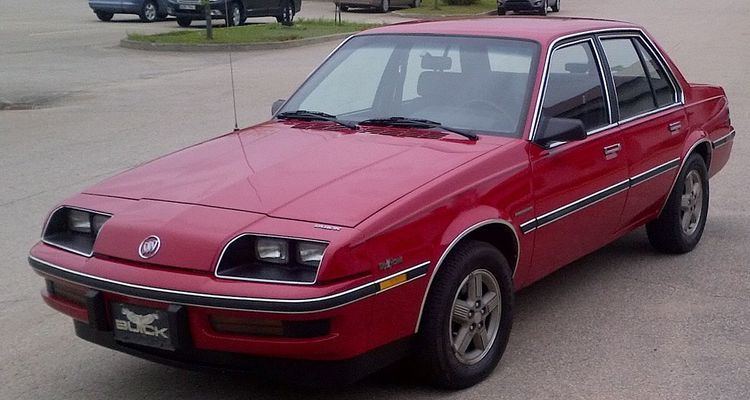Manufacturer General Motors Layout FF layout | Production 1981–2005 | |
 | ||
Class Compact (North America)
Mid-size (Global) Body style(s) 2-door convertible
2-door coupe
2-door notchback sedan
3-door hatchback
4-door sedan
5-door station wagon
5-door hatchback Predecessor GM H platform (RWD) (North America) | ||
The General Motors J platform, or J-body, is an automobile platform that was used by General Motors from 1981 to 2005. Marking the transition to front-wheel drive in the compact-car segment in North America, the J platform was the successor to the H platform, making it the third generation of compact cars designed by the company. Outside North America, the J platform was adopted by GM-controlled subsidiaries making the same transition to front-wheel drive, though as a mid-size car.
Contents
By 1990, General Motors began to change its usage of the J platform. To clear room for the 1990 Saturn S-Series, Buick and Oldsmobile ended their use of the J platform (and their presence in the compact segment). Outside of North America, the J platform was phased out in favor of the GM2900 platform (cars based upon the Opel Vectra). The best-selling variants of the J-platform (the Chevrolet Cavalier and its various Pontiac equivalents) would remain in production into the early 2000s, following several redesigns.
Replaced by the GM Delta platform, the J-platform vehicle would end production in June 2005; the final vehicle produced was a Pontiac Sunfire.
Background
The design of the J-body dated back to the mid-1970s. At that time, GM-controlled divisions in different parts of the world manufactured totally different rear-wheel drive C-segment cars – the Chevrolet Vega in America, the Vauxhall Cavalier/Opel Ascona in Europe, the Holden Torana in Australia and the Isuzu Aska in Japan. Due to the exterior dimensions, and the engines offered being in compliance with Japanese regulations, the platform was classed in the favorable "compact" designation, and competed with other Japanese made products sold in the domestic market at the time. Isuzu also supplied kits for Holden's J-car version, the Camira.
It was decided that a common replacement would be developed to eliminate duplication of engineering effort and ensure parts interchangeability – a practice known as badge engineering or platform-sharing. When the Arab Oil Embargo forced CAFE mandates, and the fear of US$3.00 for a gallon of gasoline, the J-body was practically produced straight off the drawing board.
In continental Europe, the car was sold as the Opel Ascona. In Britain, it was known as the Vauxhall Cavalier. Irrespective of badging, European production of the J-body occurred in plants in Germany, Belgium, and Britain. It was generally well received but was narrowly beaten to the European Car of the Year accolade by the Renault 9. At the time, it set new standards for performance and economy in this size of car in Europe; for instance, the 1.6 petrol engined Cavalier for the British market had a top speed of 105 mph, compared to the 101 mph top speed of the 2.0 petrol engined Ford Cortina – its key competitor.
The fourth character in the Vehicle Identification Number for a J-body car is "J".
Models
Over its 24-year production run, the GM J platform would be sold under 16 different nameplates (five under the Pontiac brand alone). In North America, during the 1980s, every division of General Motors except for GMC sold a variant of the J platform.
Aside from several cosmetic redesigns (in 1988 and 1995) along with major powertrain revisions, the J-platform saw few fundamental changes during its production run.
In all cases, final assembly of convertibles was subcontracted by General Motors; in North America by American Sunroof Corporation (ASC); in Brazil by Envemo and Sulam – and in Europe by Baur. Convertibles for the German market were assembled by Keinath and Hammond & Thiede.
Approximately 10,150,000 GM J platform cars were sold across eleven marques on six continents from 1982 through 1997, not counting Daewoo Espero sales. Consequently, it is the fifth best selling automobile platform in automotive history.
